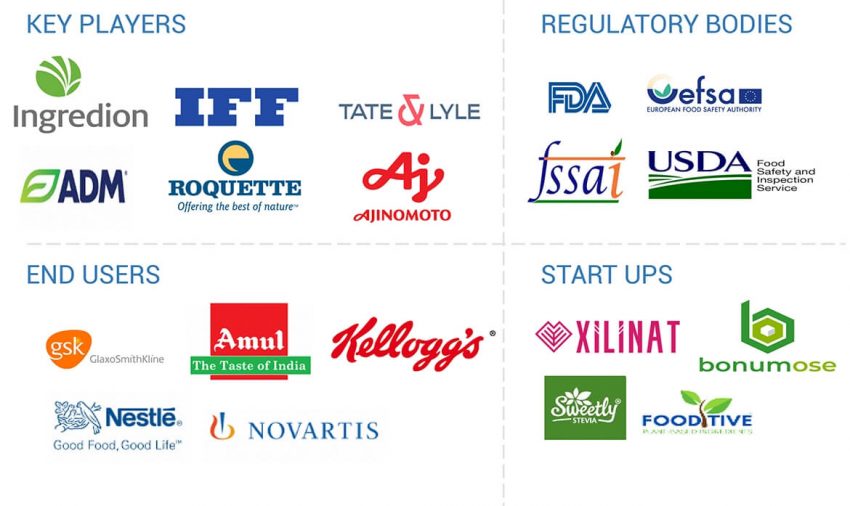According to a recent research report, “Sugar Substitutes Market by Type (HFCS, High-intensity Sweeteners, Low-Intensity Sweeteners), Manufacturing Technology (Precision Fermentation, Enzymatic Conversion, Chemical Synthesis), Application, Form, Source, Region – Global Forecast to 2029” published by MarketsandMarkets, the sugar substitute market is projected to grow from USD 23.56 billion in 2024 to USD 29.90 billion by 2029, at a CAGR of 4.9% during the forecast period.
The report provides comprehensive insights with 421 market data tables, 66 figures across 367 pages, detailing trends, growth drivers, and opportunities for the global sugar substitute market.
Key Drivers Fueling Market Growth
The sugar substitute industry is experiencing significant growth driven by multiple factors:
- Clean Label Demand: Consumers increasingly seek natural ingredients without artificial additives, pushing manufacturers to innovate and offer healthier alternatives.
- Plant-Based Diet Trends: Rising interest in plant-based diets has amplified demand for natural sweeteners like stevia and monk fruit extract.
- Technological Advancements: Improved extraction and refinement processes for high-intensity sweeteners are making production more cost-effective and efficient.
- Regulatory Support: Favorable government policies are encouraging wider adoption of sugar substitutes across food and beverage products.
- E-Commerce & Health-Focused Retail Growth: Online retail and health-centric stores provide easier access to alternative sweeteners, further expanding consumer reach.
Request Custom Data to Address your Specific Business Needs
Liquid Form: A Rising Trend
Liquid sugar substitutes are projected to grow at a significant CAGR during 2024–2029.
- Convenience & Versatility: Liquid sweeteners, such as high-fructose corn syrup and liquid maltitol, offer ease of use in beverages, chocolates, and confectionery.
- Health Benefits: Many liquid sweeteners are low-calorie and do not contribute to tooth decay, appealing to health-conscious consumers.
- Innovative Offerings: Companies like Elo Life Systems (North Carolina) are developing monk fruit-based liquid sweeteners, providing plant-based, high-intensity sweetness with excellent sensory profiles.
High-Fructose Corn Syrup Maintains Market Share
High-fructose corn syrup (HFCS) continues to dominate the sugar substitutes market.
- Production & Composition: HFCS is derived from corn starch through hydrolysis and isomerization, resulting in different glucose-fructose compositions (HFCS 42 and HFCS 55).
- Wide Applications: HFCS is widely used in sodas, fruit drinks, baked goods, cereals, and condiments due to its low cost, stability, and sweetness.
Beverages Segment Leads Applications
The beverage segment is expected to dominate the sugar substitutes market during 2024–2029:
- Consumer Health Focus: Growing demand for low-calorie and health-conscious drinks drives beverage manufacturers to adopt natural sweeteners.
- Industry Initiatives: Companies like Kraft Heinz and Ingredion are reformulating products and partnering with beverage brands to reduce sugar content using alternatives such as monk fruit.
- Market Challenge: While effective, natural sweeteners like monk fruit are still relatively expensive, limiting broader adoption.
Europe: A Key Regional Market
Europe holds a significant share in the sugar substitute market size globally:
- Health-Conscious Consumers: Increasing preference for low-calorie, nutritious alternatives drives demand.
- Strong Regulatory Support: Favorable policies support innovation and adoption of sugar substitutes.
- Strategic Investments: Companies like Roquette Frères and Bonumose are expanding production of tagatose and polyols to meet growing demand.
Leading Players in the Sugar Substitutes Market
Key companies shaping the global market include:
- Cargill, Incorporated (US)
- ADM (US)
- Ingredion (US)
- International Flavors & Fragrances Inc (US)
- Tate & Lyle (UK)
- Ajinomoto Co. Inc (Japan)
- GLG Life Tech Corp (Canada)
- Celanese Corporation (US)
- Roquette Frères (France)
- PCIPL (India)
- Mane SA (France)
- Döhler GmbH (Germany)
- Morita Kagaku Kogyo Co., Ltd (Japan)
- zuChem (US)
- Van Wankum Ingredients (Netherlands)
The global sugar substitute market is on a strong growth trajectory, fueled by health-conscious consumer trends, technological innovations, and regulatory support. Liquid sweeteners, HFCS, and natural alternatives like monk fruit and stevia are driving innovation across food and beverage products. Europe remains a prominent market hub, with companies investing in production expansion and strategic partnerships to meet rising demand.
Frequently Asked Questions
- What is driving the growth of the sugar substitutes market?
- Which types of sugar substitutes are most widely used globally?
- How is the liquid form of sugar substitutes impacting the market?
- What role does high-fructose corn syrup play in the sugar substitutes market?
- Which application segment dominates the sugar substitutes market?
- How are consumer trends influencing the demand for natural sweeteners?
- What technological advancements are shaping the sugar substitute industry?
- How do government regulations affect the adoption of sugar substitutes?
- Which regions hold the largest share in the global sugar substitutes market?
- Who are the key players in the sugar substitutes market?
- what is the cheapest sugar substitute?
- what is the best sugar substitute to use?

